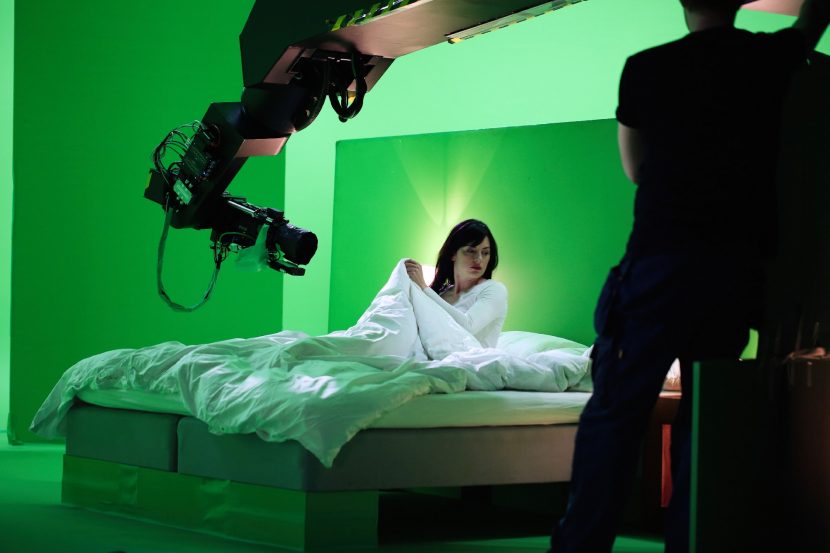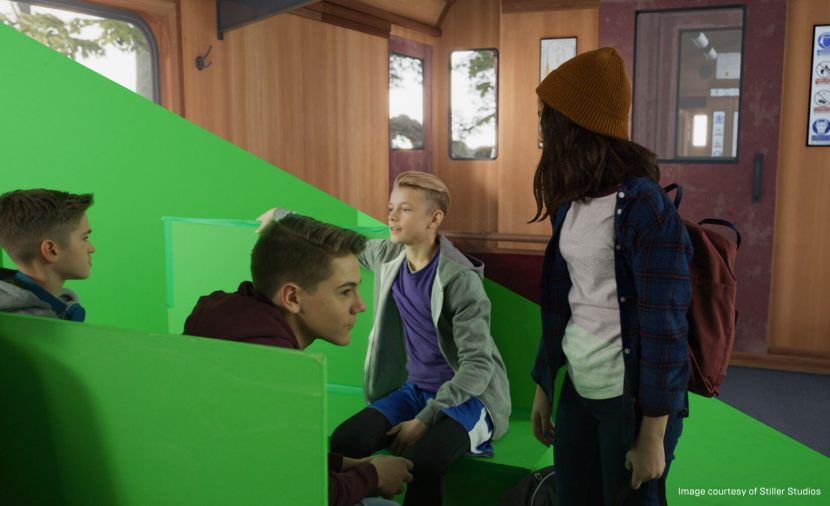 In the latest podcast in our Visual Disruptors series, Mike Seymour chats with CEO of Stiller Studios, Patrik Forsberg. They discuss how Stiller Studios helps old-school directors work in a “new-school” environment, giving them the ability to see their live-action footage perfectly in sync with their CG imagery, in real time, on set. You can listen to the full podcast below, or read on for an overview.
In the latest podcast in our Visual Disruptors series, Mike Seymour chats with CEO of Stiller Studios, Patrik Forsberg. They discuss how Stiller Studios helps old-school directors work in a “new-school” environment, giving them the ability to see their live-action footage perfectly in sync with their CG imagery, in real time, on set. You can listen to the full podcast below, or read on for an overview.
Or listen to the Visual Disruptors Podcast with our media partners Epic Games on Apple itunes.
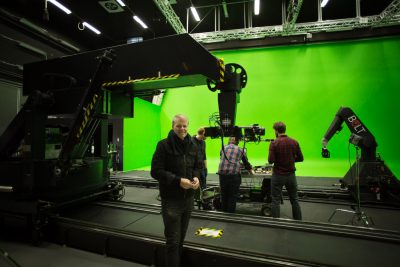
Located in Sweden, Stiller Studios is one of the most technically advanced VFX studios in the world. fxphd.com, our sister site, visited Stiller and shot there several years ago. The studio is a remarkable virtual shooting environment built around an incredible team, impressive motion control technology and the Unreal Engine UE4.
Stiller offer its clients advanced motion control and motion capture equipment, housed within a huge pre-lit green-screen space, all tied together with live real-time preview on set, courtesy of Unreal Engine. As you can hear in the new podcast, Forsberg describes himself as “an old-school director.” He may consider himself ‘old school’ but the director has built a high tech cutting edge nirvana that is now undertaking its own advanced productions.
When Stiller first started, Forsberg was grappling with getting the perfect green-screen shot. He went to Mark Roberts Motion Control in London to purchase a small robot for moving his camera a meter or two, and came back with a Cyclops motion-control rig weighing in at 4.6 tons and with the ability to reach up to six meters in the air.
“They had this giant beast standing right behind me, and I guess it was something that they thought of, because your age doesn’t really matter—you’re always gonna be a boy,” laughs Forsberg. “And I got home with that 4.6-ton unit.”Once the Cyclops was installed in the studio, it was initially hooked up to some Autodesk products. However, in the last five or six years, Stiller Studios started working with real-time engines, and today the motion control data goes directly into Unreal Engine.
“It’s like having a 16-meter track with a six-meter crane on it, but it sends out FBXs and camera positions, lens data, everything, so you can live-mix it in Unreal,” says Forsberg. “You can see live action on top of computer-generated imagery in perfect sync. What we want to provide is a way for the director to see the full picture on the screen, and that includes light directions, shadows, interactions with everything.”
“We let the director or the DOP move [the iPad] on the set; he will see exactly how the camera is going to move, and then—only seconds later—the 4.6 ton beast does that exact move again,” explains Forsberg. “After 11 years of doing this, it’s still cool to see.”
Echo
This repeatability is a key factor in pulling off some of the more complex shots the studio undertakes, and was used to great effect in the award-winning short film Echo visual effects director and fxphd.com senior contributor Victor Perez. The time-bending, bullet-time-like mirror sequences that give the film its unique character required shooting the same subject from different points of view on the same set and then combining them. For this, Stiller Studios employed a second high-speed motion-control rig, the Bolt, alongside the Cyclops.
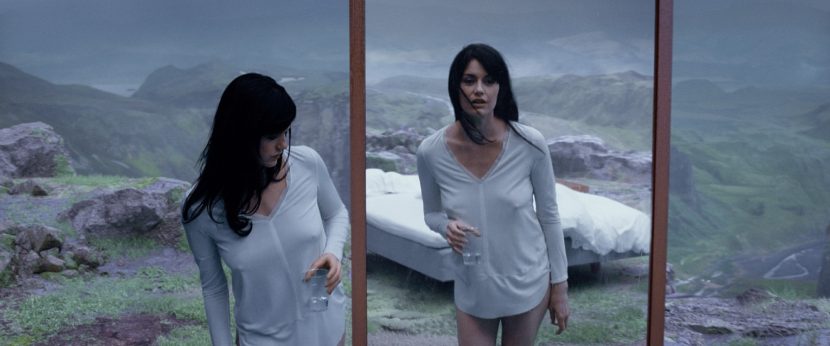
Echo tells the story of a girl who wakes up in the middle of nowhere and sees in a mirror her reflection ten seconds ahead of her in time. When she wakes up again the nightmare has just started over.
Echo is an innovative film in terms of storytelling language, and it was shot with extensive Motion Control at Stiller Studios on then two motion control rigs, the Mark Robert’s Cyclops and an additional Bolt rig. The motion control team that run the technology research at Stiller Studios worked for months to develop a new approach and setup the studio hardware to make it possible to film an effect never seen before on the screen.
“You split the time in some kind of 3D depth, so you would have one camera that gives you live action, the other one would give you bullet time, and they would swap back and forth,” explains Forsberg. “So one of the time layers would bend, but within one frame, and that’s only doable because of the motion controls, because of us being able to program them so they go back and forth in time and in camera speed, and then ultimately sync up again.”
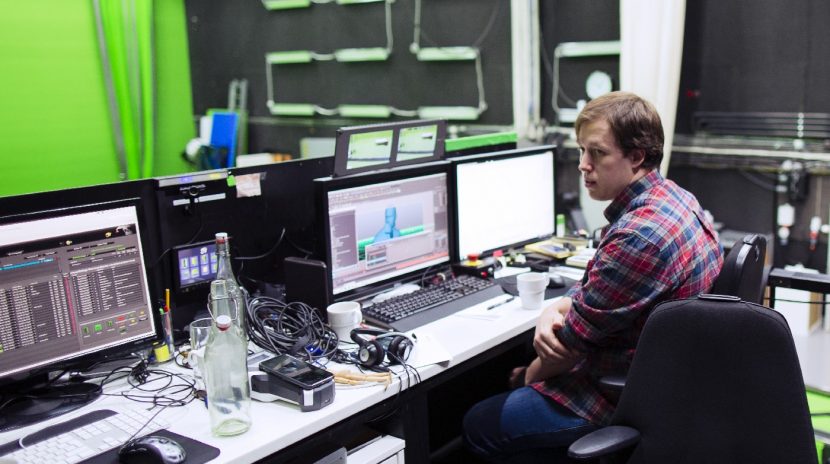
In addition to the MoCap rigs, Stiller Studios also has a computer-controlled motion base for actors, capable of taking up to one ton. This is useful for simulating movement of live actors in a helicopter or plane, or a real person riding on the back of a CG creature. For this kind of shot, UE4 is also used to visualize the technical aspects of the setup, with digital doubles of the rig and camera in the engine.
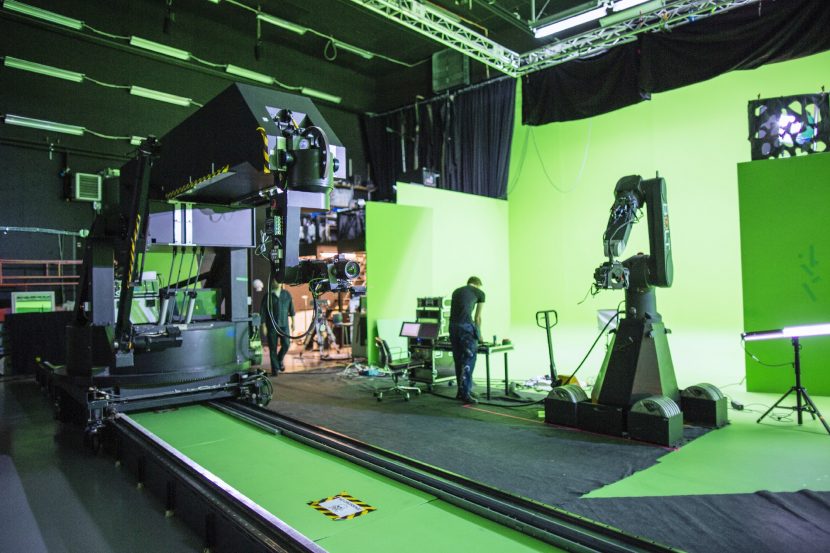
“To us, Unreal is very much a techvis, an on-set-vis, and a previs tool,” says Forsberg. “If we put a flying car in there, or a flying carpet, then we can play around with it in real time. We have a miniature copy of the model mover, so we can play around with it like a six-axis joystick and move it around, and we can see that live in Unreal as well.”
While this highly advanced setup is intended to be used for serious work, the team at Stiller Studios can’t resist having a little fun.
“It’s one of the best toys in the world,” says Forsberg. “Late Fridays, you can sit on top of that motion base and be flying an F16, or whatever. When you hook it up to the Unreal Engine, it’s like you got the biggest flight simulator in the world. It’s the same technology that you would use for big airlines and everything, but we’ve got it hooked up to the film system or to the camera system.”
It’s not just the rig and the camera that have digital doubles. Stiller Studios has also made virtual copies of their approximately 30 RGB LCD lights. “We can match the 3D and the live action, and that’s really helpful for DOPs and for directors to get a sense of what’s going to come out,” says Forsberg.
While Stiller Studios makes combining all of this complicated engineering look easy and fluid, it’s no mean feat. For example, as Forsberg says of calibrating the equipment, “I had one of my technicians doing some calculations, and he told me there were fifteen point something million ways of doing this wrong, and only one way to do it right!”
But Forsberg shows no sign of losing his enthusiasm for the challenge. “After 11 years of doing it, it’s still like going to the playground every single day,” he says.
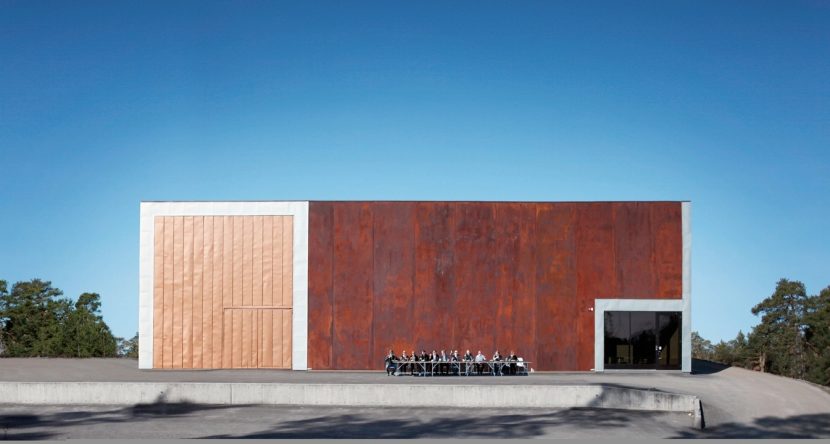
This podcast interview with Patrik Forsberg is part of our Visual Disruptors series with Media partner Epic Games. Visit the Epic Games Virtual Production hub for more podcasts, videos, articles, and insights.

